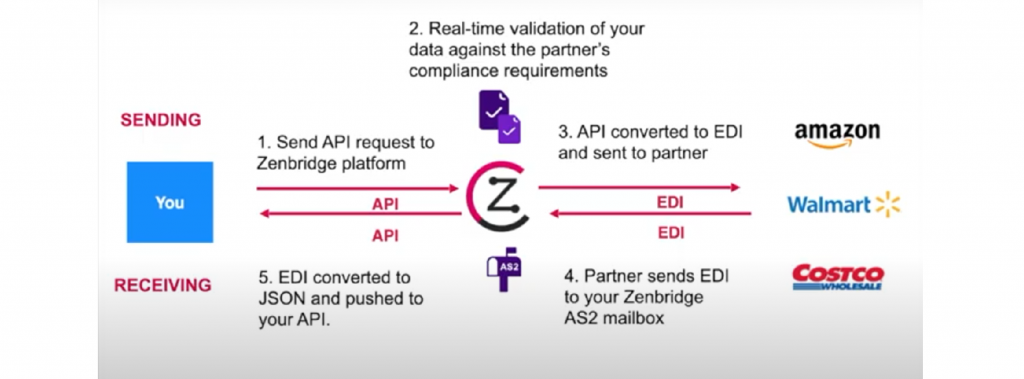Converting EDI to API and API to EDI

Introduction: The Role of EDI in Retail
In the fast-paced world of retail, supply chains are growing more complex, and the demand for speed, transparency, and accuracy is higher than ever. Electronic Data Interchange (EDI) has long played a vital role in automating transactions and ensuring seamless communication between trading partners. However, traditional EDI systems are often outdated, rigid, and difficult to integrate with modern technology.
Why EDI Needs an Upgrade
Despite its importance, EDI platforms have not kept pace with the digital transformation of the retail sector. Many legacy EDI providers lack APIs, which slows down business processes and makes integration with modern systems like ERP or WMS cumbersome. Additionally, EDI setup demands niche expertise that’s harder to source, while API development is more mainstream, many organizations find it more practical and cost-efficient to work with API developers over traditional EDI specialists.
EDI as API: A Game-Changer for Retail
To meet today’s retail demands, businesses must modernize how they handle EDI. EDI as API enables brands, manufacturers, 3PLs, and distributors to connect and exchange EDI documents using modern Application Programming Interfaces. This results in faster communication, automated order processing, and improved inventory management, ultimately driving better customer experiences.
Introducing Zenbridge: Bridging EDI and API
Zenbridge is a cloud-based platform designed specifically to enable API developers to work with EDI without needing to understand its complex infrastructure. Zenbridge simplifies EDI into JSON-based APIs, eliminating the time and cost of building in-house EDI expertise and systems.

How Zenbridge Works
1. API to EDI (Sending EDI to Partners)
- Developers send a JSON payload via API to the Zenbridge platform.
- Zenbridge validates the data against the trading partner’s compliance requirements.
- If the data is valid, Zenbridge converts the JSON into the required EDI format and sends it via AS2, SFTP, or other supported protocols.
- If the request is invalid, Zenbridge returns an HTTP 400 error with detailed messages, allowing real-time correction.
2. EDI to API (Receiving EDI from Partners)
- When you sign up with Zenbridge, you are provided with an AS2 mailbox.
- Your trading partners send EDI documents (like 850, 810, etc.) to this mailbox.
- Zenbridge automatically validates, converts the EDI into JSON.
- The JSON payload is then delivered to your configured ERP Webhook/Callback URL.
- You can also monitor and manage all transactions through the Zenbridge dashboard, designed with an ERP-friendly layout.
3. Custom EDI Partner Setup
- Zenbridge supports all major US retailers and supermarkets out-of-the-box.
- You can configure any number of custom EDI specifications for any number of trading partners, such as 3PLs, carriers or suppliers.
- Once configured, these EDI specs are instantly exposed as APIs on the Zenbridge platform, ready for integration.
EDI Standards Supported
Zenbridge supports all major EDI standards, including full conversion of ANSI X12 and UN/EDIFACT EDI documents across all versions. This ensures your organization is EDI-ready for global and cross-industry trading partners, without the need to build separate systems.
Conclusion
Simplify EDI for a Faster, Smarter Retail Supply Chain
As retail continues to evolve, so should your integration strategies. Traditional EDI systems can’t keep pace with the speed and flexibility required in today’s digital ecosystem. Zenbridge’s API-first approach modernizes your EDI infrastructure, reduces dependency on niche skills, and empowers your existing development team to manage EDI like any other API.
Whether you’re a retailer, supplier, 3PL, or ERP provider, Zenbridge helps you turn legacy EDI into a modern, agile, and scalable solution.
Ready to Future-Proof Your EDI?
Get a free demo and discover how Zenbridge makes EDI integration as easy as working with JSON APIs.
Visit zenbridge.io to start your EDI journey today—faster, smarter, and developer-friendly.
Happy Integrations!